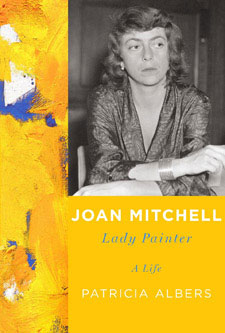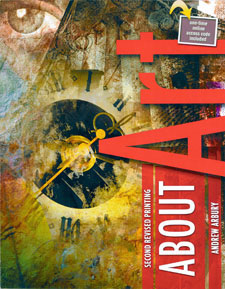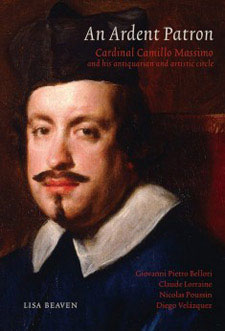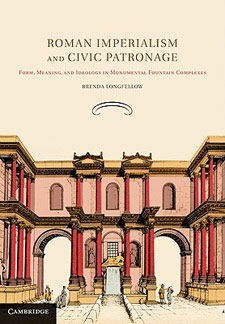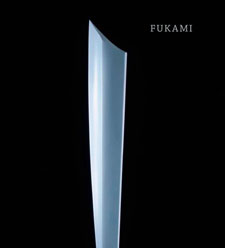CAA News Today
Institutional News
posted by CAA — June 17, 2011
Read about the latest news from institutional members.
Institutional News is published every two months: in February, April, June, August, October, and December. To learn more about submitting a listing, please follow the instructions on the main Member News page.
June 2011
The Archives of American Art at the Smithsonian Institution, based in New York and Washington, DC, has received a $3 million grant from the Terra Foundation for American Art to support another five years of the archives’ digitization project and to fund a new position that will create and oversee related online scholarly and educational outreach initiatives. This second grant brings the Terra’s total gift to the archives to $6.6 million over a ten-year period.
The Currier Museum of Art in Manchester, New Hampshire, has received a grant from the National Endowment for the Arts to support the exhibition Jon Brooks: Bringing Art and Nature to Children and Families. A comprehensive selection of educational and community outreach activities will accompany the retrospective exhibition of works by Brooks, a New Hampshire artist who is a leading member of the American studio furniture movement.
The Honolulu Academy of Arts and the Contemporary Museum, both in Hawai‘i, have announced that the two institutions will merge, effective July 1, 2011. Under the agreement, the latter museum will gift its collection and assets to the former one.
The Philadelphia Museum of Art in Pennsylvania has been approved for reaccreditation by the Accreditation Commission of the Association of American Museums, a nonprofit organization based in Washington, DC.
Rutgers University’s Visual Arts Department has received a $3.4 million gift from Marlene A. and David A. Tepper to endow a faculty chair position at the Mason Gross School of the Arts and to fund scholarships in the painting program.
The Virginia Museum of Fine Arts in Richmond has received reaccreditation from the Accreditation Commission of the American Association of Museum, based in Washington, DC.
The Whitney Museum of American Art in New York has been reaccredited by the Accreditation Commission of the Washington, DC–based Association of American Museums.
June Picks from CAA’s Committee on Women in the Arts
posted by Christopher Howard — June 16, 2011
 Each month, CAA’s Committee on Women in the Arts produces a curated list, called CWA Picks, of recommended exhibitions and events related to feminist art and scholarship in North America and around the world.
Each month, CAA’s Committee on Women in the Arts produces a curated list, called CWA Picks, of recommended exhibitions and events related to feminist art and scholarship in North America and around the world.
The CWA Picks for June 2011 include a nationwide list of screenings for !Women Art Revolution, Lynn Hershman Leeson’s documentary film on the feminist art movement, and a retrospective of the work of the mask-clad Guerrilla Girls, opening at the National Museum of Women in the Arts in Washington, DC. In addition, two events—a three-day conference in Lisbon and a survey of the infamous Young British Artist, Tracey Emin, in London—give an international flavor to the picks.
Check the archive of CWA Picks at the bottom of the page, as several museum and gallery shows listed in previous months may still be on view or touring.
A Tribute to Sylvia Sleigh (1916–2010)
posted by Christopher Howard — June 16, 2011
Amy Ingrid Schlegel is director of galleries and collections for the Aidekman Arts Center at Tufts University in Medford, Massachusetts. She served on the CAA Board of Directors from 2007 to 2011 and was liaison to the Committee on Women in the Arts from 2008 to 2011.

Sylvia Sleigh (photograph by Judy Schiller)
When I first met Sylvia Sleigh at her Chelsea brownstone in 1993 during the course of my dissertation research, I realized what a treasure trove her home/studio was and how enchanting her amiable, anecdotal manner of recalling the past also was. Until recently, within the last decade, most people knew little about Sleigh’s seventy-year oeuvre other than her best-known painting, The Turkish Bath (1973), often reproduced as one of the very few works by a woman artist in art-history textbooks. Despite the tokenistic way in which many students might know Sleigh’s work, it has long been clear how the women’s movement in New York during the 1970s helped boost her from relative obscurity since arriving in the United States from England in 1961, where she had just one solo exhibition. Now, in 2011, she posthumously received a Lifetime Achievement Award from the Women’s Caucus for Art, after earning the Distinguished Artist Award for Lifetime Achievement from the College Art Association in 2008.
It seems disingenuous not to acknowledge and assess how Sleigh’s remarkable and, in many ways, paradoxical career as a feminist artist was fostered, even born of, her long-term monogamous relationship with the art critic, curator, and writer Lawrence Alloway, whom she married in 1956 (and remained happily married to until his premature death in 1990). Sleigh and Alloway managed a long-term romance and marriage while their roles as “traditional” realist painter and “avant-garde” critic and theorist diverged during the 1960s, 1970s, and 1980s. Yet each participated in the other’s private, creative fantasies, and those fantasies were projected in the creative work of both, produced on different floors in that Chelsea brownstone.

Sylvia Sleigh, The Turkish Bath, 1973, oil on canvas, 76 x 100 in. Collection of the David and Alfred Smart Museum of Art, University of Chicago (artwork © Estate of Sylvia Sleigh)
Indeed, their relationship was the subtext of a 2001 retrospective exhibition I curated in Philadelphia, “An Unnerving Romanticism”: The Art of Sylvia Sleigh and Lawrence Alloway. Sleigh painted more portraits of Alloway than of anyone else; he also appeared several times in her group ensembles, including The Turkish Bath. Naturally, Alloway’s visage could be identified throughout the exhibition, and drawings he penned in ink within longer letters written to Sleigh during his travels were also part of the display.
The exhibition’s title was lifted from an undated letter Eleanor Antin wrote to Sleigh after seeing Sleigh’s 1971 painting Philip Golub Reclining: “It romanticism is unnerving,” Antin gushed. “The contrast between your fierceness and his lush languourous [sic] beauty is violent.…. Sylvia, dear, you are a magnificent romantic and not a lady.” In the work Golub, then about sixteen years old, gazes dreamily into a large, wall-mounted mirror, while Sleigh’s reflection—she is seated in front of her easel—scrutinizes the sitter’s naked, teenaged body and effeminate face partly obscured by his long, wavy hair. In Golub’s case, as the son of Sleigh and Alloway’s close friends Nancy Spero and Leon Golub, the desire was purely visual—Philip is essentially eye candy—but this certainly was not always the case.
One of Sleigh’s gifts as a painter was her ability to establish an intensely personal and professional dynamic between herself as creative subject and, in the case of her many straight or gay male sitters, the object of her desiring gaze. This intense dynamic also characterized her relationship with Alloway. Already wed and ten years his senior, she married him after a five-year affair. Unlike some creative couples, romantic love and intellectual partnership were not incompatible for Sleigh and Alloway. They were each other’s muses and sounding boards. They were, in many ways, separate but equal partners, autonomous agents yet fondly attached. Despite their career imbalance, particularly during the 1960s, when Alloway was in his heyday, they nurtured one another’s aesthetic and intellectual sensibilities, including their penchant for iconoclasm in their separate challenges to the art world’s prevailing notions of aesthetic quality judged in exclusively formal terms.

Sylvia Sleigh, Max Warsh Seated Nude, 2006, oil on canvas, 52 x 56 in. (artwork © Estate of Sylvia Sleigh)
During the 1970s some reviewers questioned the quality of Sleigh’s paintings depicting nude men. Ironically, it is those portraits for which Sleigh is now canonized in art history today. Linda Nochlin argued in her 1974 article “Some Women Realists: Painters of the Figure” that quality in Sleigh’s work was a red herring, writing that Sleigh “most pointedly raises the issues involved in the female artist’s representation of the male nude. While not overtly political in intention, [her works representing nude men] are certainly political in effect, if we accept sexuality as one of the major political arenas of our day.”1 While Sleigh did not deliberately distort her figures, she tended to idealize the bodies of her models and to render their faces as highly individualized portraits. This propensity creates a frisson that some critics may have misread as incompetence. Or, as Nochlin asserted, “Similar accusations of formal weakness, technical insufficiency, or even willful distortion were, of course, leveled at Courbet, Manet and even at the young Ingres, at least in part because the underlying politics of their art affronted ‘normal,’ i.e., unconscious of ideological expectations.”2 We recognize in hindsight that sex discrimination hindered Sleigh’s reputation as one of the most important painters of the twentieth century for decades. While Alloway chose not to publish a single review of Sleigh’s solo exhibitions, he certainly understood the forceful challenge her paintings of nude men posed to assumptions about spectatorship as a male domain of pleasure. After all, the same art gallery that he critiqued as a reviewer for the Nation and for many art magazines during the 1970s exhibited her nude and seminude portraits of him.
Sleigh’s paintings are, fundamentally, intimate testaments to the relationships that she maintained and nurtured over her lengthy, prodigious career. As an index of the people she knew at the time, her oeuvre collectively reads like a perpetual, unnerving romance with that rare professional intimacy expected from a realist painter who works from life, a romance that is unnerving for its unexpected capacity to simultaneously charm and alarm.
Endnotes
1. Linda Nochlin, “Some Women Realists: Painters of the Figure” Arts 48, no. 8 (May 1974), 32.
2. Ibid.
Grants, Awards, and Honors
posted by CAA — June 15, 2011
Grants, Awards, and Honors
CAA recognizes its members for their professional achievements, be it a grant, fellowship, residency, book prize, honorary degree, or related award.
Grants, Awards, and Honors is published every two months: in February, April, June, August, October, and December. To learn more about submitting a listing, please follow the instructions on the main Member News page.
June 2011
Elizabeth Bolman, associate professor of art history in the Tyler School of Art at Temple University in Philadelphia, Pennsylvania, has received a 2011 John Simon Guggenheim Memorial Foundation Fellowship in fine-arts research. She will study magnificence and asceticism in Upper Egypt via the Red Monastery Church.
Michele Brody, an artist based in New York, has been awarded a summer residency at Quimby Colony in Portland, Maine, where she will focus on her Drawing Roots series.
Carissa Carman, an MFA student in fibers at Concordia University in Montreal, Quebec, has received a $2,000 Textile Society of America Travel Grant to attend and participate in the International Symposium and Exhibition on Natural Dyes, which took place April 24–30, 2011, in La Rochelle, France.
Mary D. Garrard, professor emerita of American University in Washington, DC, has received a Lifetime Achievement Award from the Mississippi Institute of Arts and Letters.
Charles Goldman, an artist based in Brooklyn, New York, has been award a 2011 John Simon Guggenheim Memorial Foundation Fellowship in fine arts.
Michelle Handelman has been awarded a 2011 John Simon Guggenheim Memorial Foundation Fellowship in film and video. She will spend the fellowship period working on her new project, Irma Vep, the last breath, a three-channel video installation based on the life of the actress and film director Musidora, and the silent-film character she was best known for, Irma Vep, from Les Vampires (1915, directed by Louis Feuillade).
Jen P. Harris, a New York–based artist, has been awarded a $2,500 grant from the Astraea Visual Arts Fund, which promotes the work of contemporary lesbian visual artists.
Anne D. Hedeman, professor of art and medieval studies at the University of Illinois, Urbana-Champaign, has received a 2011 John Simon Guggenheim Memorial Foundation Fellowship in medieval history.
Corin Hewitt, an artist and assistant professor of sculpture and extended media at Virginia Commonwealth University in Richmond, has been awarded a 2011 John Simon Guggenheim Memorial Foundation Fellowship in fine arts.
Alison Luchs has been tapped by the Italian Art Society to deliver the 2011 Italian Art Society–Kress Foundation Lecture in Florence, Italy, taking place on June 8, 2011.
Billie Grace Lynn has received the 2011 West Grand Prize. A $25,000 award will assist her project, called Mad Cow Motorcycle, in which she will develop a biodiesel motorcycle to raise awareness for greenhouses gases coming from commercial cattle farms.
Richard Minsky has received the 2011 Worldwide Books Award for Publications for The Art of American Book Covers, 1875–1930 (New York: George Braziller, 2010). The Art Libraries Society of North America awarded him a certificate and a $1,000 prize for his book at its recent annual conference, held jointly with the Visual Resources Association.
Linda Nochlin, Lila Acheson Wallace Professor of Modern Art at the Institute of Fine Arts, New York University, has received a 2011 Icon Award in the Arts from the Bruce Museum in Greenwich, Connecticut.
Jennifer Ellen Robertson, professor of anthropology at the University of Michigan, Ann Arbor, has received a 2011 John Simon Guggenheim Memorial Foundation Fellowship in East Asian studies.
Allison Smith, a sculptor based in Oakland, California, has been awarded a $50,000 USA Fellowship for artistic excellence from United States Artists.
Susan Webster, Jane Williams Mahoney Professor of Art History and American Studies at the College of William and Mary in Williamsburg, Virginia, has received a 2011 John Simon Guggenheim Memorial Foundation Fellowship in fine-arts research. She will study European architecture and Andean masters in colonial Quito, Ecuador.
Bradley Wester, an artist based in New York, has been awarded two residencies. From September to November 2011, he will be a resident artist at AIR Antwerpen in Belgium. In February 2012, he will take part in the Hermitage Artist Retreat, based in Englewood, Florida, and comprised of writers, painters, composers, playwrights, poets, choreographers, performance artists, sculptors, and other artists whose work defies categorization. (He was also a resident there in March 2011).
Kristina Wilson, associate professor of art history at Clark University in Worcester, Massachusetts, has received the twenty-third Charles C. Eldredge Prize for Distinguished Scholarship in American Art, awarded by the Smithsonian American Art Museum in Washington, DC, for her book, The Modern Eye: Stieglitz, MoMA, and the Art of the Exhibition, 1925–1934 (New Haven: Yale University Press, 2009).
Exhibitions Curated by CAA Members
posted by CAA — June 15, 2011
Exhibitions Curated by CAA Members
Check out details on recent shows organized by CAA members who are also curators.
Exhibitions Curated by CAA Members is published every two months: in February, April, June, August, October, and December. To learn more about submitting a listing, please follow the instructions on the main Member News page.
June 2011
John Chaich. Mixed Messages: A(I)DS, Art + Words. La MaMa La Galleria, New York, June 2–July 3, 2011.
Wanda M. Corn and Tirza True Latimer. Seeing Gertrude Stein: Five Stories. Contemporary Jewish Museum, San Francisco, California, May 12–September 6, 2011.
Heather Gibson. Patterns of Consumption. Atrium Gallery, Tyler School of Art, Temple University, Philadelphia, Pennsylvania, April 2–15, 2011.
Elizabeth Keithline. A Tool Is a Mirror. Danforth Museum of Art, Framingham, Massachusetts, May 4–June 5, 2011.
John Silvis and Brett Dickinson. Theodolite. New York Center for Art and Media Studies, New York, April 6–21, 2011.
Robert Storr and Francesca Pietropaolo. North by New York: New Nordic Art. Third Floor Galleries, Scandinavia House, Nordic Center in America, American-Scandinavian Foundation, New York, April 14–August 19, 2011.
Virginia-Lee Webb. Ancestors of the Lake: Art of Lake Sentani and Humboldt Bay, New Guinea. Menil Collection, Houston, Texas, May 6–August 28, 2011.
Books Published by CAA Members
posted by CAA — June 15, 2011
Publishing a book is a major milestone for artists and scholars—browse a list of recent titles below.
Books Published by CAA Members appears every two months: in February, April, June, August, October, and December. To learn more about submitting a listing, please follow the instructions on the main Member News page.
June 2011
Patricia Albers. Joan Mitchell, Lady Painter: A Life (New York: Alfred A. Knopf, 2011).
Andrew Arbury. About Art (Dubuque, IA: Kendall Hunt, 2011).
Lisa Beaven. An Ardent Patron: Cardinal Camillo Massimo and His Antiquarian and Artistic Circle (London: Paul Holbertson, in association with Centro de Estudios Europa Hispánica, 2010).
Wanda M. Corn and Tirza True Latimer. Seeing Gertrude Stein: Five Stories. (Berkeley: University of California Press; San Francisco: Contemporary Jewish Museum; Washington, DC, National Portrait Gallery, 2011).
Brenda Longfellow. Roman Imperialism and Civic Patronage: Form, Meaning, and Ideology in Monumental Fountain Complexes (New York: Cambridge University Press, 2010).
Andreas Marks, ed. Fukami: Purity of Form (Hanford, CA: Clark Center for Japanese Art and Culture, 2011).
John R. Senseney. The Art of Building in the Classical World: Vision, Craftsmanship, and Linear Perspective in Greek and Roman Architecture (New York: Cambridge University Press, 2011).
Spring Art Journal Features Artist’s Project by Paul Sietsema and Centennial Essay by Richard Shiff
posted by Christopher Howard — June 15, 2011
 CAA recently published the Spring 2011 issue of Art Journal, which includes a Centennial essay by the noted scholar Richard Shiff and, on the front and back covers, a project by the Los Angeles–based artist Paul Sietsema.
CAA recently published the Spring 2011 issue of Art Journal, which includes a Centennial essay by the noted scholar Richard Shiff and, on the front and back covers, a project by the Los Angeles–based artist Paul Sietsema.
The issue acknowledges CAA’s Centennial year with Shiff’s text, “Every Shiny Object Wants an Infant Who Will Love It,” a state-of-the-field essay on contemporary art. Beginning with the unfigured sensory experience of a Donald Judd installation in Marfa, Texas, the text examines the human impulse to organize and categorize the elements of aesthetic experience.
Paul Sietsema created two news works for the issue: Untitled Composition for the front cover and Painter’s Mussel for the back. Both are based on found photographs and slyly pun on the interplay between language and the working life of artists today.
The Spring issue also publishes an essay by Saloni Mathur that details the postcolonial context in which the American designers Charles and Ray Eames explored the traditional arts of India—and helped configure the industrial-design program of the newly emergent nation. Next, Christopher Bedford, chief curator of the Wexner Center for the Arts in Ohio, invited seven artists and curators to join him in pondering the peculiarities the art-speak word “project” (as used in the first paragraph of this news item). While some see it as a useful term, others find darker implications in its widespread use.
An essay by Karen Kurczynski called “Drawing Is the New Painting” suggests that the pressures of the contemporary marketplace can jeopardize drawing’s characteristics of expression and immediacy. In a monographic study titled “City of Degenerate Angels,” Ken D. Allan traces the art and publishing efforts of Wallace Berman in the context of the 1950s Los Angeles jazz scene in which the artist came of age. Additional audio evidence for Allan’s argument appears on the Art Journal website.
The Reviews section of the issue, edited by Howard Singerman, contains Michael Corris’s analysis of Julia Bryan-Wilson’s book, Art Workers: Radical Practice in the Vietnam War Era, and Alzo David-West’s assessment of two publications about art and visual culture in North Korea.
Report from the May 2011 Board of Directors Meeting
posted by Linda Downs — June 14, 2011
The CAA Board of Directors held its second meeting of the year in New York on Sunday, May 1, 2011 at the offices of the law firm Debevoise & Plimpton LLC in Manhattan. President Barbara Nesin welcomed the four newly elected board members—Leslie Bellavance, Denise Mullen, Saul Ostrow, and Georgia Strange—who were attending their first meeting. Nesin also recognized Anne-Imelda Radice, who recently joined the board as an appointed director. In addition, new officers began their one-year appointmentat the May meeting (see the board list for all names, titles, and affiliations).
The board reviewed a three-year budget projection for CAA for fiscal years 2012–14 and approved the fiscal year 2012 budget. This is the first time that CAA staff has developed a multiyear budget projection in order to better plan and effect positive changes for the future. The 2012 budget includes: an increase in staff for publications, membership, and information technology; a professional analysis of the journals to determine the feasibility of transitioning to electronic formats for The Art Bulletin and Art Journal and to prepare a business plan for practical publications; and increased funds for Professional-Development Fellowships for artists and art historians.
Linda Downs, CAA executive director, presented an overview of recent advocacy initiatives and recommendations for greater board and member participation. Andrea Kirsh, former vice president for external affairs, is assisting the organization on advocacy issues by researching and preparing public statements in cooperation with the executive director and legal counsel. The board agreed to clarify CAA’s position in support of the proposed legislation on orphan works and to publicly post a statement that can also be sent to art schools and art departments.
The board approved a resolution to use online voting in the annual election of directors to the board, eliminating paper ballots. (CAA had employed both formats for several years.) Concerned about the low number of members who vote in elections, the group considered strategies to address the issue. Surveys of members indicate that the primary reason they do not vote is because they do not know the candidates. CAA currently provides short videos from the candidates as well as written statements and biographies that describe their backgrounds and their interests in serving on the board. CAA also reminds members to vote through email messages. The board welcomes suggestions on how to increase voter participation (see below for contact information).
Patricia McDonnell, who led the Task Force on Practical Publications, presented a resolution to develop a business plan to launch practical publications. The board approved the resolution , and the business plan will become part of the professional analysis of the journals to be carried out in the next two years.
Anne Collins Goodyear, who led the Task Force on Editorial Safeguards and Procedures, presented a resolution to revise CAA’s statement on conflict of interest. The amendment specifically addressed procedures for editors and added language about the importance of confidentiality. The new Statement on Conflict of Interest and Confidentiality, published last month, will be read and signed annually by board members, journal editors, committee members, and award jurors.
The board welcomes conversations on any question or issue related to the association and invites members to submit agenda items to the board and to the Annual Members’ Business Meeting. Send your ideas and suggestions to Vanessa Jalet, CAA executive assistant. Upcoming board meetings are scheduled for: Sunday, October 23, 2011, in New York; and Sunday, February 26, 2012, in Los Angeles, a day after the Annual Conference. The business meeting will be held on Friday, February 24, 2012, during the Los Angeles conference.
You may also read about two previous board meetings, held in October 2010 and February 2011.
Apply for a Meiss or Wyeth Publishing Grant
posted by CAA — June 13, 2011
CAA is offering two publishing-grant opportunities this fall—through the Millard Meiss Publication Fund and the Wyeth Foundation for American Art Publication Grant—that support new books in art history and related subjects. The publisher must submit the application to either grant or to both funds, though only one award can be given per title. Awards are made at the discretion of each jury and vary according to merit, need, and number of applications. Both programs have a deadline of October 1, 2011. CAA will announce the recipients of the Meiss and Wyeth grants in late November or early December 2011.
Millard Meiss Publication Fund
CAA awards grants from the Millard Meiss Publication Fund to support book-length scholarly manuscripts in the history of art and related subjects that have been accepted by a publisher on their merits but cannot be published in the most desirable form without a subsidy. For complete guidelines, application forms, and a grant description, please visit www.collegeart.org/meiss or write to nyoffice@collegeart.org. Deadline: October 1, 2011.
Wyeth Foundation for American Art Publication Grant
Thanks to generous funding from the Wyeth Foundation for American Art, CAA awards a publication grant to support book-length scholarly manuscripts in the history of American art and related subjects. For purposes of this program, “American art” is defined as art created in the United States, Canada, and Mexico prior to 1970. Books eligible for the Wyeth Grant have been accepted by a publisher on their merits but cannot be published in the most desirable form without a subsidy. For complete guidelines, application forms, and a grant description, please visit www.collegeart.org/wyeth or write to nyoffice@collegeart.org. Deadline: October 1, 2011.
Committee on Women in the Arts Picks for June 2011
posted by CAA — June 10, 2011
Each month, CAA’s Committee on Women in the Arts selects the best in feminist art and scholarship. The following exhibitions and events should not be missed. Check the archive of CWA Picks at the bottom of the page, as several museum and gallery shows listed in previous months may still be on view or touring.
June 2011
“Women and the Arts: Dialogues in Female Creativity in the U.S. and Beyond”
June 15–17, 2011
University of Lisbon Centre for English Studies
Centro de Saúde de Sete Rios, Lisbon, Portugal 1600-214
This three-day international gathering, organized by the American Studies Group of the University of Lisbon Centre for English Studies, will promote a reflection on women’s artistic production, contrasting the US context with other cultures. Featured sessions address such topics as “Dreaming, Doing, Being, & Seeing: The Woman Artist as Seen, Invisible, Witnessed and Observer”; “Women and the Crafts”; “Performance Arts”; “Art and Gender Politics”; “Portraits of the Artist as Woman”; “Women in Contemporary Art in the U.S. and Beyond”; and “Boundaries and Crossings in Theory and Art.”
!Women Art Revolution
Various locations across the United States
This eight-three-minute documentary film, directed by Lynn Hershman Leeson (and a CWA Pick in January 2011), relates the feminist art movement to the 1960s antiwar and civil rights causes and explains how historical events sparked feminist actions against major cultural institutions. Detailing major developments in women’s art of the 1970s, the film looks at early feminist art-education programs, political organizations and protests, and alternative art spaces such as A.I.R. Gallery and Franklin Furnace in New York and the Women’s Building in Los Angeles. Leeson also turns her attention to publications such as Chrysalis and Heresies and to landmark exhibitions, performances, and installations of public art that changed the direction of contemporary art.
In June, the following theaters and cultural institutions will screen the film:
- June 1–8: IFC Center, 323 Avenue of the Americas, New York, NY 10014
- June 2: Manhasset Cinemas, Gold Coast International Film Festival, 430 Plandome Road, Manhasset, NY 11030
- June 2–9: West End Cinema, 1 M Street NW, Washington, DC
- June 3: New Hyde Park Cinemas, Gold Coast International Film Festival, 3324 Hillside Avenue, New Hyde Park, NY 11040
- June 10: Institute of Contemporary Art, 100 Northern Avenue, Boston, MA 02210
- June 10: The Screen, Santa Fe University of Art and Design, 100 Saint Michaels Drive, Santa Fe, NM 87505
- June 14: Billy Wilder Theater, Hammer Museum, 10899 Wilshire Boulevard, Los Angeles, CA 90024
- June 15–19: Museum of Fine Arts, 100 Huntington Avenue, Boston, MA 02116
- June 17–23: Laemmle’s Music Hall 3, 9036 Wilshire Boulevard, Beverly Hills, CA 90211
- June 17–23: Northwest Film Forum, 1515 Twelfth Avenue, Seattle, WA 98122
- June 23–26: Noble Theater, Oklahoma City Museum of Art, 415 Couch Drive, Oklahoma City, OK 73102
- June 24–27: Northwest Film Center, 1119 Southwest Park Avenue, Portland, OR 97205
- June 24–30: Denver FilmCenter, Denver Film Society, 2601 Blake Street, Denver, CO 80205
- June 24–30: Real Art Ways, 56 Arbor Street, Hartford, CT 67401
- June 24–30: Salina Art Center, 150 South Santa Fe, Salina, KS 67401
Talks by the director and guest speakers—such as Howardena Pindell and Carey Lovelace in New York, Carrie Brownstein in Portland—and other special events will accompany selected screenings.

Guerrilla Girls, Untitled, from the series Guerrilla Girls Talk Back: The First Five Years, 1985–1990, 1986, color photolithograph on paper, 17 x 22 in. National Museum of Women in the Arts, Gift of Steven Scott, Baltimore, in honor of Wilhelmina Cole Holladay (artwork © Guerrilla Girls; photograph provided by the National Museum of Women in the Arts)
The Guerrilla Girls Talk Back
June 17–October 2, 2011
National Museum of Women in the Arts
1250 New York Avenue NW, Washington DC 20005
The Guerrilla Girls—anonymous females who take the names of dead women artists and appear in public wearing gorilla masks—use humor to expose sexism and racism in the art world, film, politics, and culture at large. This exhibition presents posters and ephemera from the group, including works from two portfolios, Guerrilla Girls Talk Back: The First Five Years, 1985–1990 and Guerrilla Girls Talk Back: Portfolio 2.
Tracey Emin: Love Is What You Want
May 18–August 29, 2011
Hayward Gallery
Southbank Centre, Belvedere Road, London SE1 8XX, England
The first major survey in London of Tracey Emin’s work occupies both floors and two outdoor sculpture terraces at the Southbank Centre. Works from every period of her career and in diverse media—painting, textiles, work on paper, photography, neon, film, and sculpture—will accompany a new series of outdoor sculptures made especially for the Hayward Gallery installation.





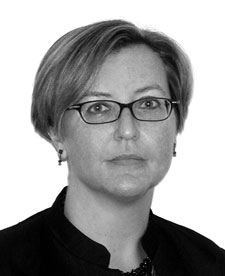 Elizabeth Bolman
Elizabeth Bolman
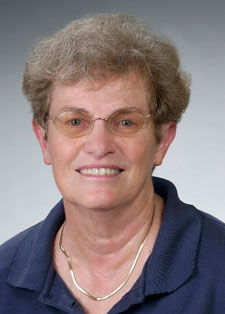 Mary D. Garrard
Mary D. Garrard
 Michelle Handelman, still from Dorian, 2009, 4-channel HD video, 63 min. (artwork © Michelle Handelman)
Michelle Handelman, still from Dorian, 2009, 4-channel HD video, 63 min. (artwork © Michelle Handelman)
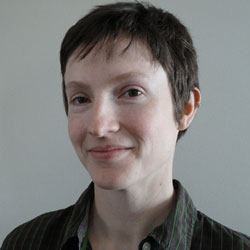 Jen P. Harris
Jen P. Harris
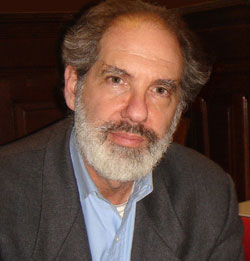 Richard Minsky (photograph by Richard Grosbard)
Richard Minsky (photograph by Richard Grosbard)
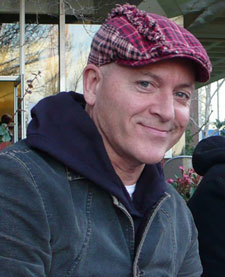 Bradley Wester
Bradley Wester
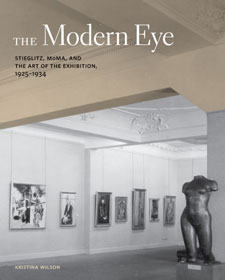

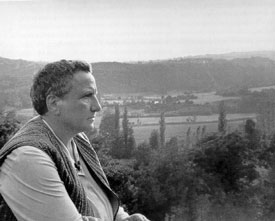 George Platt Lynes, Gertrude Stein, Bilignin, 1931, toned gelatin-silver print. Baltimore Museum of Art, Cone Collection, Gift of Adelyn D. Breeskin, BMA 1985.3 (artwork © Estate of George Platt Lynes)
George Platt Lynes, Gertrude Stein, Bilignin, 1931, toned gelatin-silver print. Baltimore Museum of Art, Cone Collection, Gift of Adelyn D. Breeskin, BMA 1985.3 (artwork © Estate of George Platt Lynes)
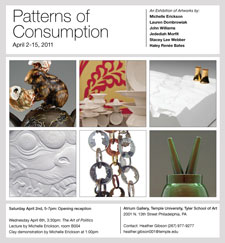 Promotional image for Patterns of Consumption
Promotional image for Patterns of Consumption
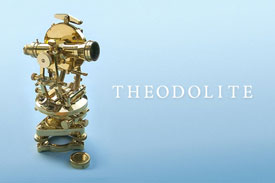 Promotional image for Theodolite
Promotional image for Theodolite
